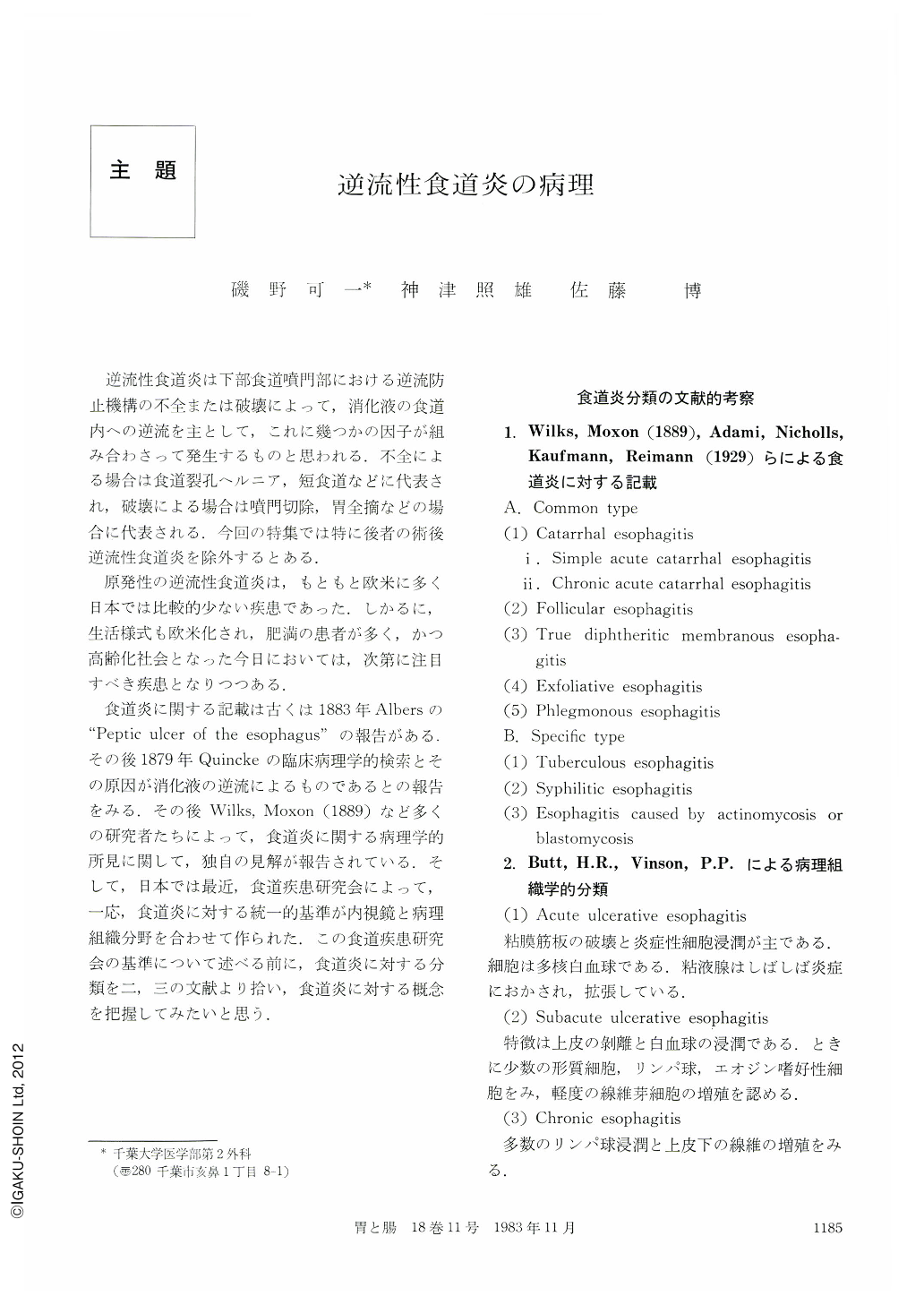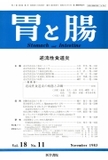Japanese
English
- 有料閲覧
- Abstract 文献概要
- 1ページ目 Look Inside
- サイト内被引用 Cited by
逆流性食道炎は下部食道噴門部における逆流防止機構の不全または破壊によって,消化液の食道内への逆流を主として,これに幾つかの因子が組み合わさって発生するものと思われる.不全による場合は食道裂孔ヘルニア,短食道などに代表され,破壊による場合は噴門切除,胃全摘などの場合に代表される.今回の特集では特に後者の術後逆流性食道炎を除外するとある.
原発性の逆流性食道炎は,もともと欧米に多く日本では比較的少ない疾患であった.しかるに,生活様式も欧米化され,肥満の患者が多く,かつ高齢化社会となった今日においては,次第に注目すべき疾患となりつつある.
The diagnosis of reflux esophagitis has been achieved by patient's symptoms, radiologic and endoscopic findings, biopsy, lower esophageal sphincter pressure, intra-esophageal pH and acid clearance test. However, very mild case is sometimes difficult to be diagnosed and its definite diagnosis should be based on histopathological findings of biopsy specimens.
The pathological findings, however, also have several problems. First, biopsy specimen itself may have following problems. Namely, (1) whether the biopsy was taken from the proper place or not and (2) whether the biopsy specimen has good quality or not ? The more basic problem, however, is that criteria for pathological diagnosis of reflux esophagitis have not been well defined.
Pathological findings of reflux esophagitis include: A) In mucosal epithelium, inflammatory cell infiltration and ballooning of epithelial cells, thiclrened basal layer, epithelial defects, immature regeneration of the epithelium and extended dermal peg are prominent features of reflux esophagitis. B) In lamina propria, infiltration of inflammatory cells, dilatation and proliferation of capillary vessels, edema, fibrosis etc. are the characteristic findings of reflux esophagitis. These findings have been documented in the literature for a long time. However, there is no universal agreement for what findings and what degree are necessary to make its definite diagnosis.
In Japan, therefore, a criterion of diagnosing reflux esophagitis was established by The Research Committee of Esophageal Diseases which includes endoscopic and pathological criteria. In fact, its pathological findings were defined as the following three times: (1) acute inflammatory change: neutrophil infiltration, (2) erosive inflammatory change: epithelial defects and (3) chronic inflammatory change: interstitial fibrosis. Among these pathological criteria, the acute inflammatory change is the problem because it is supposed to have neutrophil infiltration but without its infiltration, some patients are well enough to be considered to have reflux esophagitis by their symptoms and endoscopic findings, and this may occur in 15~20% of the cases.
Therefore, we should tentatively deal with definite cases by the above criteria and accessary findings should be documented precisely for further study.

Copyright © 1983, Igaku-Shoin Ltd. All rights reserved.


